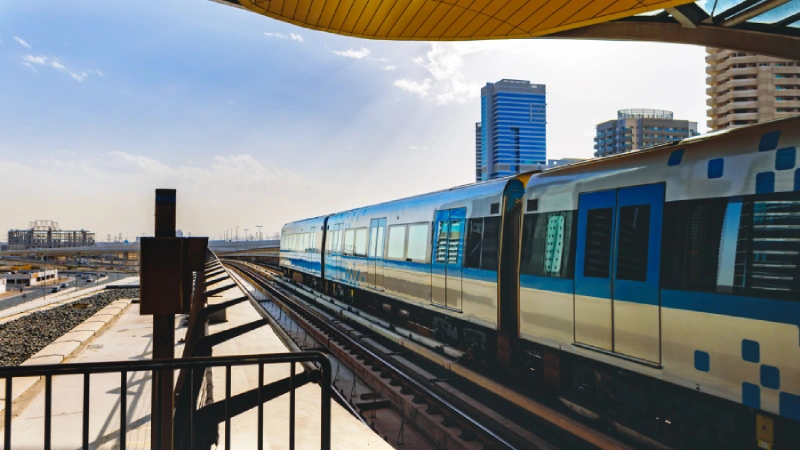Mumbai’s local train network is the lifeline of the city, carrying millions of passengers every day. For first-time visitors, navigating the local trains can seem daunting, but with the right tips, you can travel like a pro. In this guide, we’ll share everything you need to know about using Mumbai’s local trains, from understanding the routes to mastering the art of boarding and alighting. Let’s dive in!
Why Mumbai Local Trains Are a Must-Use
Speed and Efficiency
Mumbai’s local trains are the fastest way to travel across the city, especially during peak hours when roads are congested.
Affordability
Local trains are incredibly affordable, making them a popular choice for daily commuters and budget travelers.
Extensive Network
The train network covers almost every part of the city, including suburbs, business districts, and tourist areas.
Understanding Mumbai’s Local Train Network
Key Routes
Mumbai’s local train network is divided into three main lines:
- Western Line
- Route: Churchgate to Dahanu Road (via Andheri, Bandra, and Borivali).
- Key Stations: Churchgate, Mumbai Central, Dadar, Bandra, Andheri, Borivali.
- Central Line
- Route: Chhatrapati Shivaji Maharaj Terminus (CSMT) to Kasara/Karjat (via Dadar, Kurla, and Thane).
- Key Stations: CSMT, Dadar, Kurla, Ghatkopar, Thane, Kalyan.
- Harbour Line
- Route: CSMT to Panvel (via Wadala and Chembur).
- Key Stations: CSMT, Wadala, Chembur, Vashi, Panvel.
Types of Trains
Slow Trains
- Stops: Stop at every station.
- Best For: Short distances and local travel.
Fast Trains
- Stops: Skip smaller stations and stop only at major ones.
- Best For: Longer distances and faster travel.
Ladies’ Special Trains
- Timings: Operate during peak hours (morning and evening).
- Best For: Women travelers for added safety and comfort.
Tips for Navigating Mumbai Local Trains
1. Plan Your Route
- Use apps like M-Indicator or Google Maps to check train schedules, routes, and platforms.
- Identify whether you need a slow or fast train based on your destination.
2. Buy the Right Ticket
- Single Journey Tickets: Available at ticket counters or automatic ticket vending machines (ATVMs).
- Season Tickets: Ideal for daily commuters, offering unlimited travel for a month.
- Smart Cards: Save time and money with a Mumbai Metro Smart Card, which can be used on both local trains and the metro.
3. Know Your Platform
- Check the platform number and train direction before boarding.
- Look for electronic display boards or ask station staff for assistance.
4. Board and Alight Like a Pro
- Boarding: Stand near the entrance gates and be ready to board quickly. Trains stop for only a few seconds at each station.
- Alighting: Move towards the door a station before your stop to avoid last-minute rushes.
5. Avoid Peak Hours
- Peak Hours: 8-10 AM and 6-8 PM.
- Best Time to Travel: Mid-morning or late afternoon for a less crowded experience.
6. Use the Ladies’ Compartment
- Women can travel in designated ladies’ compartments for added safety and comfort.
- Ladies’ special trains operate during peak hours.
7. Stay Alert
- Keep your belongings secure and be aware of your surroundings.
- Avoid displaying valuables like phones or jewelry.
8. First-Class vs. Second-Class
- First-Class: More expensive but less crowded. Ideal for tourists and those seeking comfort.
- Second-Class: Cheaper but can be extremely crowded. Best for budget travelers.
Essential Apps for Mumbai Local Trains
1. M-Indicator
- Provides real-time train schedules, platform information, and route maps.
- Available for both Android and iOS.
2. UTS (Unreserved Ticketing System)
- Allows you to buy local train tickets using your smartphone.
- Available for Android and iOS.
3. Google Maps
- Offers train routes, timings, and walking directions to and from stations.
Safety Tips for Traveling by Local Trains
- Hold On: Always hold onto the handrails or overhead straps, especially during crowded rides.
- Mind the Gap: Be careful while boarding and alighting to avoid accidents.
- Stay Hydrated: Carry a water bottle, especially during long journeys.
- Emergency Contacts: Save the railway helpline number (182) for emergencies.
Fun Facts About Mumbai Local Trains
- Busiest Network: Mumbai’s local train network is one of the busiest in the world, carrying over 7.5 million passengers daily.
- Ladies’ Special: Mumbai was one of the first cities in India to introduce ladies’ special trains.
- Longest Platform: The platform at Karjat Station is one of the longest in India, stretching over 1.2 kilometers.
Conclusion
Mumbai’s local trains are more than just a mode of transportation—they’re a way of life. With this guide, you’ll be able to navigate the city’s train network like a pro, whether you’re a first-time visitor or a seasoned traveler. So, hop on a local train, embrace the hustle and bustle, and experience the true spirit of Mumbai!

